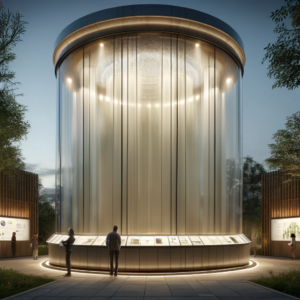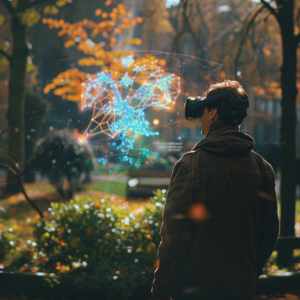Hello everyone! We’ve hit a big step in our project: the design freeze stage. This means we’ve settled on our final design and are getting ready to make final prototypes for it.
A Big Change
After sharing our design and hearing your thoughts, we realized our original idea, the Bit-Worm, wasn’t going to work out. It was a cool concept but not very practical. So, we’ve decided to go a more practical approach to carry out the bioleaching process. We’re redesigning existing bio-leaching tanks for this and have been busy figuring out the best way to set everything up. The redesign of our solution also comes with integrating other aspects like user experience, awareness and convenient collection methods. Our solution’s goal is to envision a future in 2050 where mining for raw materials to manufacture electronic products will be no longer required and e-waste is properly disposed and recycled sustainably. Let’s envision this process to be done in a big cylindrical tank that is placed in your favorite garden in the city where you can also drop off your e-waste.


Bio-Leaching Tanks – These tanks are where the action happens. Since the tanks will be installed in public gardens, we want it to look pleasing. The tanks will be circular with the outer face acting as a display wall. We’ve benchmarked existing bio-leaching tanks and decided to redesign the internal parts to help the little microbes to do their job more efficiently. We will also be incorporating highlight tech within the tanks to help us control the process and pick out the best microbes for the job.
You might be wondering what happens after the bio-leaching process. Through processes such as electrowinning, we can recover metals from the solution, which can then be further refined into their metallic forms.
E-Waste Drop-Off and Learning Spot – We’re setting up a spot where people can bring their old electronics. But it’s not just a drop-off point. We’ll have cool AR (Augmented Reality) stuff to show people what e-waste is, why it’s a problem, and how bioleaching helps. It’s a way to learn and see how much e-waste we’re dealing with.
Using Existing Gardens – Instead of building a whole new garden in the city, we’re going to use the gardens that are already there. This is where we’ll put our tanks and the learning spot. We decided not to go with the underground recycling idea. Instead, we hope to work with existing recyclers who can give us the materials we need.

Team Snapshot:
Quote of the week: “There is no innovation and creativity without failure. Period.” — Brené Brown
Next Steps: Start with the final prototype!

Recent Comments